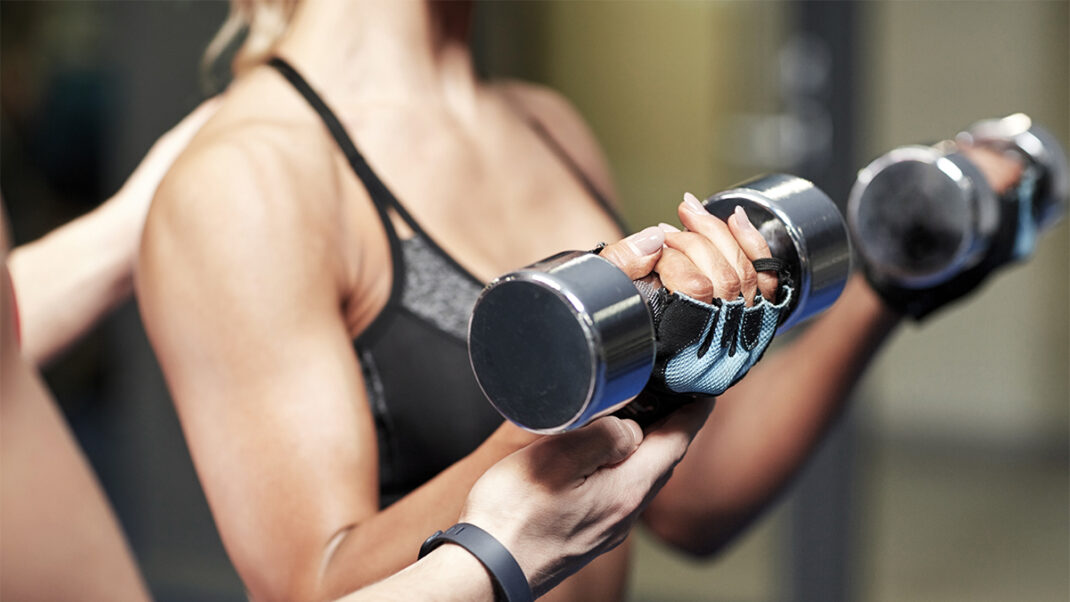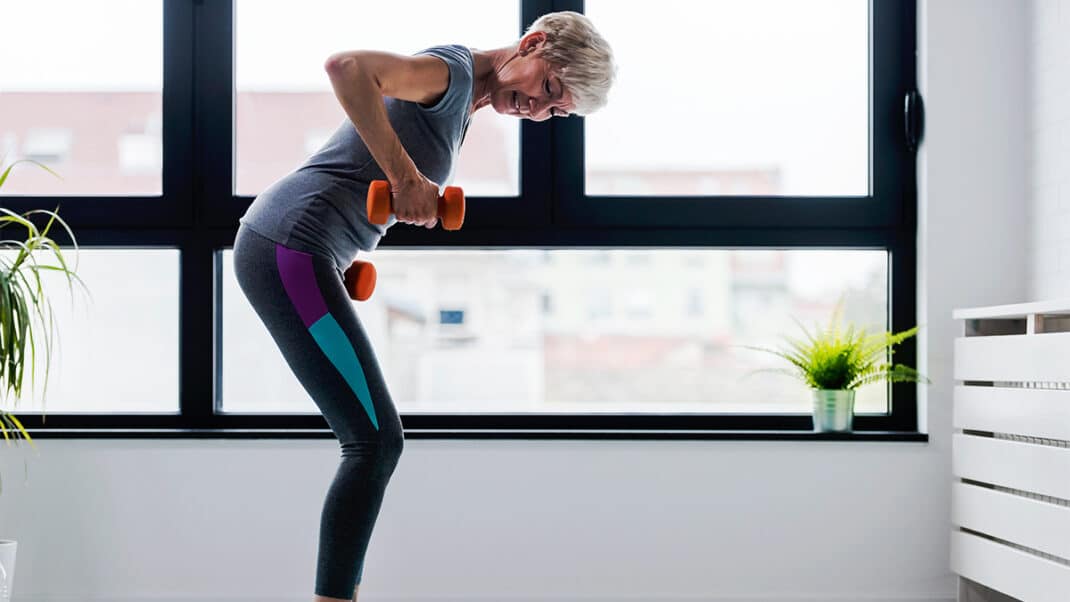The Size-Sensitive Schedule
Create accessible and achievable classes that welcome overweight participants to your program.
Who is better equipped to help heal the obesity epidemic than those of us in the fitness industry? Anticipating the needs of overweight people and guiding them to active lifestyles takes knowledge and compassion. By creating viable, welcoming classes, you foster an atmosphere of health for every shape and size. Associating pleasure with activity is a very powerful and motivating tool.
The size-sensitive group fitness schedule creates a safe and nurturing environment where people can exercise while feeling emotionally secure. Review your personal feelings about obesity to get started on the right track. Consider leading a staff meeting on the topic as well. While many overweight individuals simply take in more calories than they expend, you really don’t know about their personal histories. Genetics, family environment, health conditions, emotional trauma and even dieting may have contributed to their size.
Suspend the idea of weight loss when you approach your programming. Focus instead on the exercise needs of your students and help them find ways to connect with their bodies. Weight loss is generally on their minds 24 hours a day. When they stop losing weight or reach a plateau, they sometimes stop exercising.
Exceptional Experiences
Take a one-on-one approach with overweight participants. As a program director, you want to create possibilities in a world where they may be constantly faced with physical and emotional barriers. Sit down with clients, review the schedule and propose options. Encourage them to observe classes that are appropriate for their fitness levels. They may feel confident after viewing a class and know intuitively whether it’s right for them. If it’s not, encourage them to sit in on other classes until they find an appropriate match. If mutually agreeable, partner them with someone in the same class who is either close in fitness level or shares a similar body shape.
Don’t hesitate to recommend more advanced movement classes for those who are experienced and fit—just as you would for thinner participants who have been exercising regularly. Moderately paced, low-impact classes are usually a very inviting option for all. While the following suggestions are not a conclusive list, you can apply them to almost any existing schedule, without having to create a “special” class. These ideas are more for beginners:
- Keep the choreography simple.
- Use quarter turns instead of half turns or pivots.
- Avoid jumping, to reduce torque.
- Teach “step-together, step-touch” as an alternative to moves like the grapevine, which people with larger thighs may not be able to perform.
Be creative with your ideas. Include movements that people may have enjoyed as children. Examples include bowling, tennis, basketball and baseball moves. Ballet poses like the arabesque awaken the dormant child within. Traditional dances from weddings and social events—for example, the hustle, the macarena and the electric slide—may encourage participants to hit the dance floor outside of class. “Soul Train” is an excellent activity for getting people involved. Ask participants to form two lines and partner up with the person across from them; then have them make their way across the floor in pairs between the cheering lines. Other choreography ideas include side slides for lateral movement, backward walking, and “freestyle”—any movement students desire.
During abdominals classes, encourage overweight participants to use The Step® with risers so that they can get assistance from gravity. The incline keeps large-breast tissue away from the neck and opens air passages. This makes it easier to access the abdominals without pulling on the head.
Traditional strength training classes are generally successful for larger students because of the slower pace. Branded programs like BODYPUMP®, in which the choreography remains the same for a number of weeks, can also be very beneficial. The biomechanical adaptation allows students to focus on their muscles instead of trying to learn new exercises. Indoor cycling is not the best choice for obese beginners. The seats are usually too small and much too uncomfortable.
Mind-Body Matters
Balance, strength, flexibility, stress reduction and a deeper mind-body connection are all essential for leading a healthy, active lifestyle. Mind-body offerings may be particularly intimidating to overweight participants. In some cases, an individual may be so dissociated from her body that she has a difficult time understanding and processing the cues. Yoga and Pilates classes are wonderful opportunities to introduce body awareness.
Yoga Classes. Large yogis achieve numerous benefits from a well-structured class. Use a variety of props to help bigger participants perform common yoga asanas. Chairs, blocks, straps and blankets are perfect props for modifying poses. They also create a sense of space. Large thighs, substantial bellies and generous breasts may make some of the poses impossible without modifications. For example, when doing the Triangle Pose, participants can put their hand on a chair instead of on their foot or the floor. Suggest they use blocks for forward bends. Straps can help hold the leg up in Dancer’s Pose. In a supine position, have students place a blanket beneath the head to avoid the chin tilt caused by excess fat on the back.
Be aware that medical conditions such as diabetes can impede a student’s sense of balance. Uncontrolled high blood pressure makes forward bends unsafe.
Pilates Mat Classes. The only requirement for a mat class is making sure students can get down to and up from the floor. The larger body has much to gain from alignment and core strengthening. Spend some time in the beginning of class talking about the alignment of the bones. Cue students to take a supine position with legs bent and feet resting on the floor. “Are the shoulder blades flat on the back? Are you able to feel the natural lordotic curve?” Instruct students to move their flesh and palpate their hip bones. There is a deep sense of awareness when students feel the pelvis. “Are the femurs in alignment with the hip sockets?” Larger thighs tend to put the femurs farther apart. “Do the feet rest completely with all 10 toes equally on the floor?”
Help students reap the rewards of diaphragmatic breathing and teach them how it differs from thoracic breathing. Show how to soften the abdominals and draw them up and in. At first there may be confusion about the muscles in the abdominal area. Participants might feel disconnected from this section of their bodies. Some of them might push out the stomach for safety or suck it in out of shame.
Modify Pilates exercises as you would for any beginners. Keep the head on the floor for exercises like the Single Leg Stretch or Single Straight Leg Stretch. Perform prone exercises in short sets because they may be uncomfortable for larger bodies. Avoid exercises like the Roll-Up until students achieve a better sense of technique. One good starter exercise is to have participants sit with their backs about 18 inches away from the wall knees bent, feet flat on the floor. Cue them to roll down until the upper back touches the wall, then curl and round up. This can start strengthening the powerhouse, which can lead to more strenuous exercises.
During the cooldown, ask participants to relax their abdominals. Abdominal tension from stress is unlike the sensation achieved after Pilates class. Softening the abdominals generates a different body consciousness and begins to show participants what the muscles are capable of. Ask students to tune into their digestion. This helps them distinguish the abdominals from the stomach.
Physical Connection
Once you have created a safe community of classes for overweight participants to enjoy, they can decide for themselves what their personal weight loss goals will be—if that is an option for them. Be ready to support them in their journeys. Long-term results are possible only when there is a connection to the physical body—an inside-out approach. When you create a dialog from the body to the mind, you enhance this connection and guide participants to higher levels of self-awareness, wisdom and confidence. These new skills produce a unique intuitive strength that leads to success in health and wellness. You are the catalyst for this transformation.
Here are common challenges that overweight exercisers deal with and some suggestions you can offer:
Skin Care. Chafing is probably the number-one problem for an overweight individual. Repetitive movements, combined with sweat, can cause skin to rub against skin, producing discomfort and pain. Suggest treating chafing with ice packs and the same ointments used for diaper rash.
Foot Care. Increased pressure on the foot can result in toe box problems if nails curl down and irritate the toes; therefore, toenails are best kept on the shorter side. Alleviate Achilles tendinitis, heel spurs and plantar fasciitis with proper stretching. Recommend appropriate footwear to prevent further injuries.
Clothing. Workout clothing needs to protect skin from rubbing against skin. Form-fitting clothes cover and protect body folds. Sports bras are important for support and motion control. Recommend garments that wick sweat away from the skin.
Fitness Wear and Products
Amplestuff, www.amplestuff.com
Danskin, www.danskin.com
Junonia, www.junonia.com.
Just My Size, www.justmysize.net
Books and Magazines
Ashmore, A. 2005. Torque and Training Overweight Clients. IDEA Fitness Journal, 2 (1), 52–57.
Campos, Paul. 2004. The Obesity Myth: Why America’s Obsession With Weight Is Hazardous to Your Health. New York: Gotham Books.
Dahlberg, C.P. 2003. Living Large. Yoga Journal (178), 88–95.
Erdman, C.K. 1995. Nothing to Lose: A Guide to Sane Living in a Larger Body. San Francisco: Harper.
Fraser, L. 1998. Losing It: False Hopes and Fat Profits in the Diet Industry. New York: Plume Books.
Gaesser, G.A. 2002. Big Fat Lies: The Truth About Your Weight and Your Health. Carlsbad, CA: Gurze Books.
Goodman, W.C. 1995. The Invisible Woman: Confronting Weight Prejudice in America Carlsbad, CA: Gurze Books.
Kraus, S.J., & Madan, S.K. 2005. Unlocking Barriers for Heavy Clients. IDEA Fitness Journal, 2 (1), 46–51.
Sullivan, Judy. 1997. Size Wise. New York: Avon Books.
Organizations
Council on Size & Weight Discrimination Inc., www.cswd.org
National Association to Advance Fat Acceptance (NAAFA), www.naafa.org
By showing participants how to apply exercises in their routine activities, you help bridge the gap from the gym to daily life. One class in Michigan welded prongs to snow shovels. The teacher helped the students learn proper body mechanics for shoveling snow by adding more weight to their shovels as they got stronger.
Certain yoga poses help calm an individual before a job interview or board meeting or during a conflict with children. Note these possibilities during class, placing the focus
on lifestyle change.
A strong powerhouse from Pilates helps when carrying laundry, taking things in and out of the trunk of a car and climbing stairs. It also decreases lower-back discomfort. Sprinkle these suggestions throughout class to help participants understand the direct association between the exercise and daily activities.
Include breathing exercises in every class. Fitness professionals understand the power of
breath. Unfit individuals need to learn appropriate breathing techniques for fitness, yoga and Pilates. Relay to your class how breath can be effective for lifting heavy objects, climbing stairs or carrying children. Proper breathing helps reduce symptoms of stress. It induces relaxation, ensures adequate oxygenation and helps decrease cortisol levels. It also boosts metabolism, softens cravings and assists in overall wellness.
Advertisement
Rochelle Rice, MA
A nationally-recognized speaker, educator and author of Real Fitness for Real Women. She holds a masterÔÇÖs degree from NYU specializing in plus-size exercise. Rochelle has appeared on the CBS Early Show and ABC World News Tonight.





